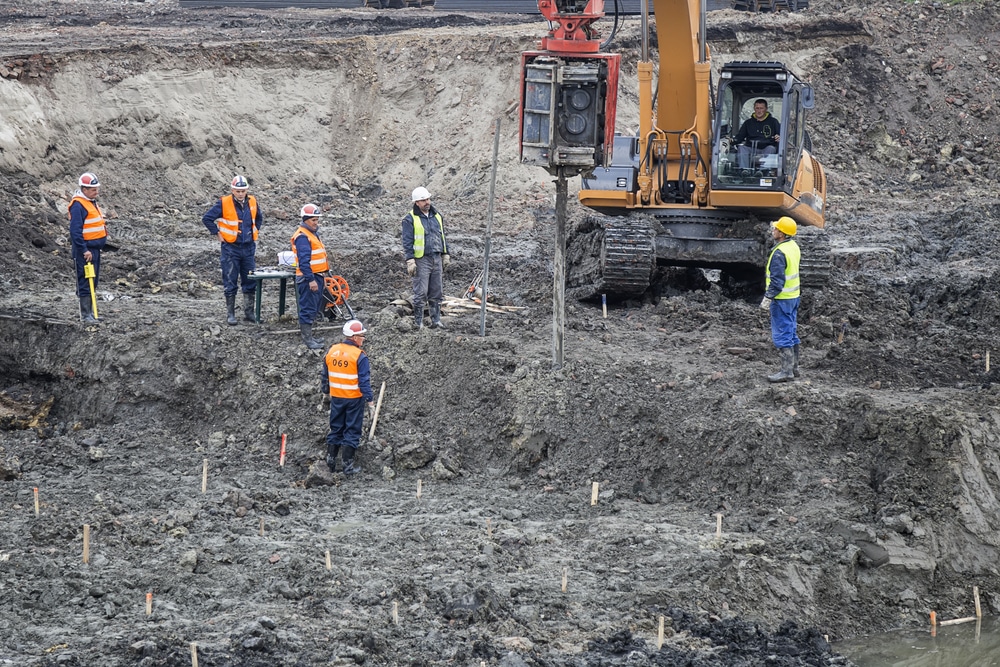Checking Out the Important Function of Consulting Engineers in Geotechnical Projects: A Comprehensive Overview of Their Contributions and Obligations
Consulting engineers offer as pivotal figures within geotechnical jobs, entrusted with the elaborate obligations of assessing subsurface conditions and making sure the architectural integrity of buildings. As we check out the multifaceted payments of speaking with engineers, it ends up being noticeable that their participation is important to navigating the difficulties integral in geotechnical undertakings.
Overview of Geotechnical Engineering
Geotechnical engineering is an important technique within civil engineering that concentrates on the behavior of planet products and their communication with structures. This area includes the research study of dirt, rock, groundwater, and the mechanics controling their residential properties and actions. Geotechnical engineers analyze the physical and chemical properties of these products to identify their viability for numerous building projects, ensuring that structures are founded on secure and reliable ground.

In addition, geotechnical designers need to consider ecological variables, such as soil contamination and groundwater administration, to promote lasting advancement. Their proficiency is crucial in optimizing the design and construction processes, inevitably adding to the durability and safety of civil design jobs.
Trick Responsibilities of Consulting Engineers

Additionally, they are responsible for developing design criteria and requirements that stick to regulatory requirements and best practices. This consists of reviewing website problems and determining ideal building and construction techniques, which is vital for lessening threats related to ground instability.
Consulting designers likewise offer as liaisons between various stakeholders, consisting of clients, service providers, and regulative bodies, facilitating clear interaction and cooperation throughout the job lifecycle. consulting civil engineering companies. They supply professional guidance during building and construction, guaranteeing that geotechnical facets are properly attended to and that any kind of unexpected obstacles are managed efficiently. Inevitably, the complex responsibilities of speaking with designers are basic to the integrity and success of geotechnical jobs, affecting both security and sustainability in building and construction practices
Website Assessments and Investigations
A comprehensive website assessment is vital for recognizing the subsurface problems that influence geotechnical projects. Consulting designers play a crucial duty in conducting these assessments to guarantee the security and stability of construction activities. This process usually includes a series of examinations, consisting of dirt tasting, borehole boring, and geophysical surveys, to gather important information on dirt properties, groundwater degrees, and click over here now the geological context of the website.
Engineers assess the gotten information to recognize the possible difficulties presented by the subsurface conditions, such as soil instability or high groundwater levels, which can affect the design and implementation of the task. In addition, site analyses assist in evaluating the existence of pollutants, which is essential for ecological conformity and ensuring public safety and security.
In addition, seeking advice from designers coordinate with multidisciplinary teams to incorporate findings from website investigations into more comprehensive task goals. Through strenuous paperwork and reporting, they provide important insights that educate stakeholders regarding the suitability of the website for suggested developments. Inevitably, the thoroughness of site analyses lays the foundation for reliable planning and design options, mitigating risks connected with unanticipated subsurface conditions.
Style and Risk Monitoring
After conducting detailed site analyses, seeking advice from engineers concentrate on the layout and danger monitoring elements of geotechnical tasks. This phase is important as it guarantees that the crafted solutions are not just reliable but additionally safe and sustainable (consulting civil engineering companies). Designers utilize their know-how to develop web styles that resolve the particular geotechnical conditions recognized during the site evaluations, consisting of soil residential properties, groundwater behavior, and potential dangers
Threat management is essential to this procedure, as it entails recognizing, evaluating, and mitigating prospective threats connected with the project. Designers employ different logical approaches and modeling strategies to forecast the habits of soil and rock under different loading problems. By evaluating uncertainties and prospective failing settings, they can recommend layout modifications that enhance stability and decrease danger.
Additionally, seeking advice from designers make sure conformity with pertinent codes and criteria, which are crucial for minimizing liabilities. They also prepare backup strategies to resolve unanticipated obstacles that might develop throughout building. With precise style and proactive risk management, consulting designers play an essential function in making sure the security, functionality, and longevity of geotechnical tasks, eventually adding to the overall success of the construction undertaking.
Partnership With Job Stakeholders
Effective cooperation with task stakeholders is necessary for the success of geotechnical jobs. Consulting engineers play a crucial function in helping with communication amongst different parties, consisting of clients, professionals, regulatory authorities, and ecological specialists. This cooperation makes sure that all stakeholders have a clear understanding of job purposes, timelines, and prospective risks.
Consulting designers are accountable for incorporating stakeholder input into the layout and execution of geotechnical solutions - consulting civil engineering companies. By proactively engaging with stakeholders, they can determine concerns early in the job lifecycle, enabling prompt adjustments and mitigating prospective conflicts. This positive strategy not only cultivates count on yet also improves project effectiveness
In addition, seeking advice from designers should browse the intricacies of regulatory conformity, ensuring that all geotechnical methods straighten with lawful and ecological criteria. Their know-how in this field is vital in keeping open lines of communication with regulative bodies, therefore facilitating smoother approvals and allowing procedures.
Conclusion
